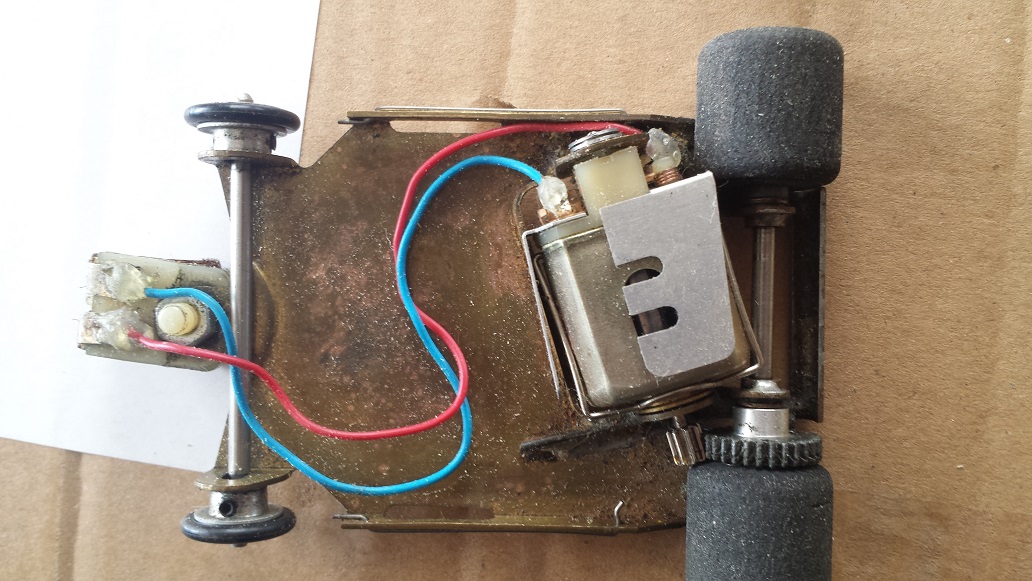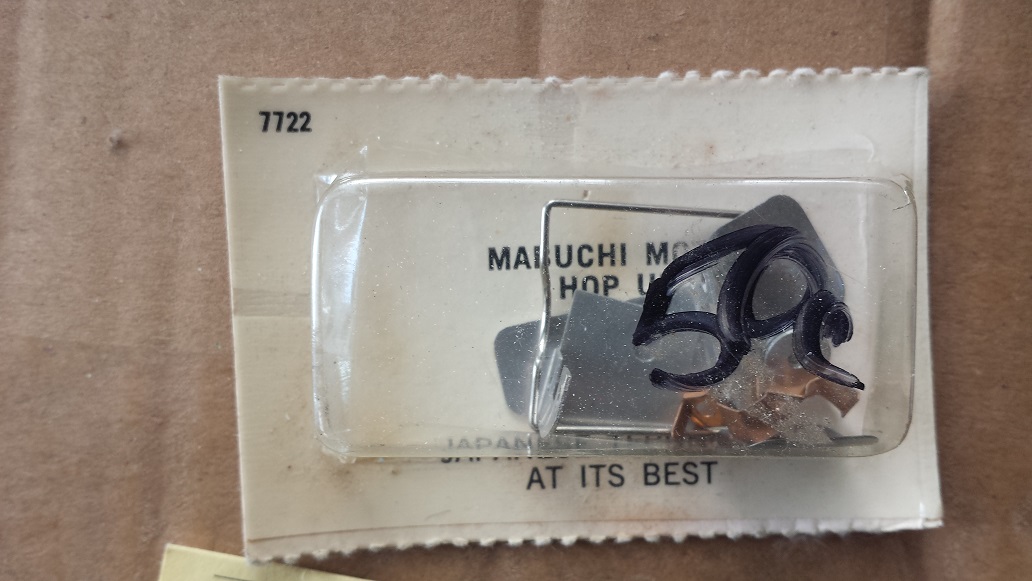They're good motors, although awfully anemic in stock form (*they come in a couple of different winds, and some with bearings, some sintered bushings). I've done a lot of rewinding of these motors and the bullet points are:
-End bell is closer to the Champion than the Mabuchi FT16D in design, but made of a MUCH tougher/heat-resistant material than either.
-Brush tubes/"heat sinks" are somewhat different, although they look similar from the outside when installed.
-Bushing tower on the end bell is wider than the Mabuch FT16D, more like the Champion, so the motor might not fit in stock form on some chassis, at least without some mods.
-Brass bearing carrier is the same on the outside as the Mabuchi FT16D, although the motor uses either a fixed bushing or a bearing, so the motor should pretty much "drop-in" on chassis made for the earlier Japanese Mabuchi FT16D. ***As on the Japanese FT16D and Champion motors, the bearings (*when present) are very poor...same type.
-While the can is still a one-piece "drawn" type, it is of a much thicker/heavier material than the Japanese FT16D. Can is plated (*looks like a yellow zinc-chromate) rather than painted or chromed.
-Unfortunately, the magnets are of a similar type as the earlier Japanese FT16D. Still, they seem to measure a bit stronger on average, something like 10% or so. They will drop right in to the FT16D can if desired.
-The armature is powder coated, and doesn't have the older fiber (*cardboard) stack-end insulators. Lams are similar but appear slightly heavier in profile.
-Commutator is the same/similar as those found in current disposable Chinese motors, and the tab connections are by "spot-weld".
So there is a good amount of potential in these motors, at least for vintage applications, and they are probably the best/closest analog for the earlier Japanese FT16D.
As for your questions:
The powder coat on the outside has no bad or good effect, other than adding a tiny bit of extra rotating mass to an already heavy armature. The air gap on these motors is large by today's standards, so that extra thickness is of no consequence either. As long as you don't take off too much metal, you're probably not hurting anything by polishing the outside of the armature stack. ***You "could" be adding a slight imbalance by grinding this way, because the armature shaft is the reference, and they can be off some. Also, sandpaper and a drill will "follow" the in and out of the spaces between poles, taking more off the leading edge, so it's best to do a little...and the flip the arm and do a bit to finish the other way.
Any typical motor mods will work on these. Substituting better bearings at least on the driven end is a good thing for faster winds. Modern D-motor magnets will fit, and even the ceramics are almost twice as strong as the stock ones...although work best with larger diameter arms. There are vintage shims made to adapt stronger C motor magnets to the D can, and those will work well, producing a tight air-gap for any "regular" diameter (.510" nominal) armature. Of course the stock magnets can be shimmed as well, and steel shims in various thicknesses can either be formed or even bought.
That would depend on what mods (*especially magnets) have been done to the motor. You are far less limited here because of the better can bushing/bearing and the MUCH better end bell material. In stock form, you can go with either a 60-65 turns of #30 type wind, or a 50-55 turns of #29. With better magnets and some other mods, you can go all the way to the hotter period winds.
Anywhere around that period seems about right, and the armature type and how it was produced seems to support that general timeframe. They don't seem to interest people much, so I haven't seen much information about all that.
Thanks for your response,
Yes, alot of the points you raised are the same as what i found, the can is a little bit larger, but also stronger and thicker.
Brush tubes are significantly different and something else i noticed was the brushes on these contained alot of copper, whereas the earlier 16D brushed appear to just be carbon, but thats my observation.
Interesting what you say about the champion endbells, as i have seen a few photos of these made by Champion and some other brands and it appears that some of these companies re-worked mabuchi 16D motors with their own endbells and repainted the cans etc.
I would not mind getting some of these as replacements for some of my older ones that need a refurb.
Ive seen these endbells here https://www.professo...t-p/mot1659.htm
This looks like a typical champion endbell? Im trying to find suitable ball bearings and brush carriers for it.
I read somewhere that these later endbells on the hong kong motors were also made of delrin and much better quality than the earlier ones?
Regards the bushings, none of the ones ive seen have had bearings, all mine have bronze oil lite bushings, but i did read that some of them did have a ball bearing on the endbell.
The large bushing at the end of the can has worn out on a couple of my older motors and not sure the best approach to replace these, but it looks like people are grinding down the remaining bushing and drilling it out to fit a ball bearing.
Is this the best approach?
We pretty much race mostly vintage cars on our track due to its narrow lane width. Ill have to post some photos of the track here soon 
These motors are great candidates for the cars we race.
Your right it is powder coating i was referring to on the armatures, I was just reading a bit about it and some people are claiming it was used as an electrical insulator to prevent shorts?
IDK, but if you epoxy rewinds i would not see any issue.
I was not polishing the armatures to remove the powder coating, but rather because my father used to do this after what he read from an article way back in his early days of racing. Supposedly it made the motors faster and I did the same on some motors, but your right it can probably make the armature off balance, also on a drill when you push too hard the shaft can flex and you end up getting a rounded armature.
I think its best to do this on a lathe, but I really now feel its not that necessary, even my proslot motors do not have this done, but I know on a couple of muras ive got they did have polished armatures.
I think you are right that the bushing is their main weakness on these motors as they seemed to wear out rather fast.
I will seriously look at experimenting with various winds, ive got all the wire in the world after acquiring the remains of a closed transformer winding business (valve amplifiers is my other hobby and i need to wind transformers)
I know if you add strong magnets, you need to have the right wind to balance everything or else you end up having a weak armature from what i understand. I really need to learn the physics behind this so i know what im doing. Would like to rewind some of the older worn out motors ive got.

















